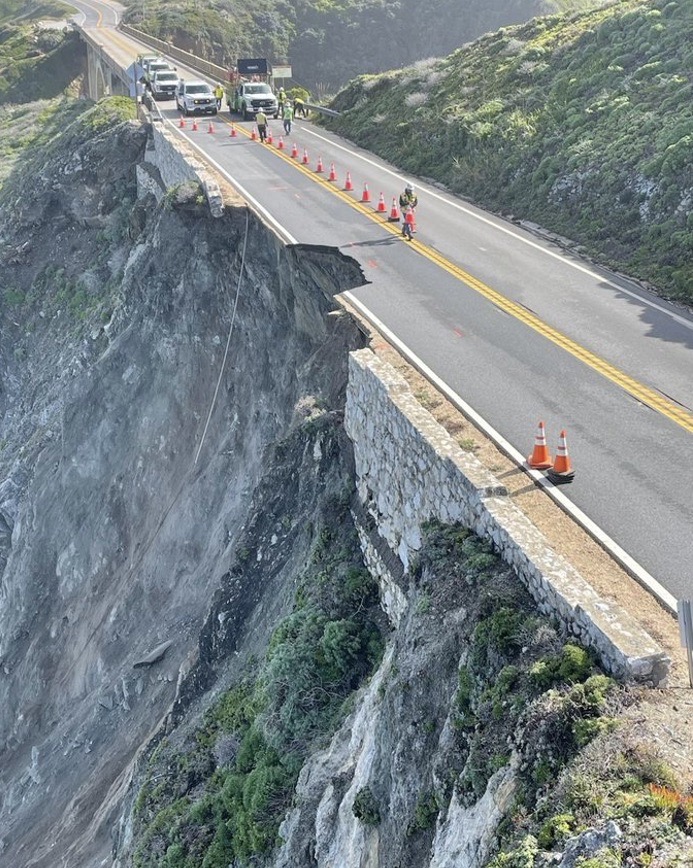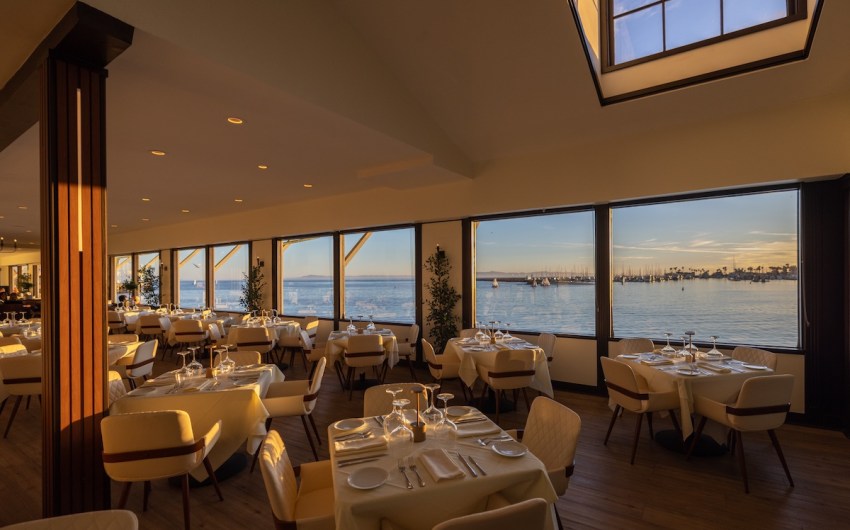Roadway Collapse on California’s Iconic Highway 1 Disrupts Coastal Travel
Big Sur Landslide Spurs Evacuations and Closure of Popular State Parks

A sizable section of California’s Highway 1 collapsed and slid off between Carmel and Big Sur over Easter weekend in late March, isolating the cliff-dwellers along the Big Sur coast. The southern end of the scenic highway, a favorite of travelers from Santa Barbara, has been closed since January 2023 due to a series of giant landslides. The state parks from Andrew Molera to Limekiln are also off-limits with all reservations canceled.
Daily convoys are being sent through the affected areas, bringing workers and supplies to repair the road, Caltrans public information officer Kevin Drabinski said. Hundreds of tourists were evacuated after the slide, and they are bringing food and water to the residents.
Matt Wilkins, general manager of the Big Sur Lodge at Pfeiffer Big Sur, said around 1,500 motorists were stranded when a portion of the highway near Palo Colorado fell down the cliff around 4 p.m. on March 30. “We sheltered something like 53 people in our conference room and another 50 in the lobby,” he said. “But almost everyone was evacuated by noon the next day.”
Wilkins said the local businesses have been in constant communication with safety officers and Caltrans, which has been restoring normalcy by getting traffic lights operational again.
Big Sur’s Santa Lucia Mountain Range stretches 140 miles along the coast from Carmel to the Cuyama River in San Luis Obispo County. With steep pitches and crashing waves, the eroding mountain face that supports Highway 1 has undergone 1,500 recorded landslides. The winding roadway has been closed more than 55 times since its completion in 1937 after 18 years of construction, almost entirely due to landslides. Most recently, the storms of 2022 and 2023 closed stretches of the Big Sur parks entirely, including Nacimiento Road over the mountains.
While the Big Sur Chamber of Commerce has said there is no official schedule for completing the “temporary roadway stabilization,” restaurants, stores, galleries, campgrounds, and hotels are eager for visitors to regain access: “The local businesses rely heavily on tourists for income,” said Wilkins. “We’ll just have to cross our fingers and hold our breath.”









